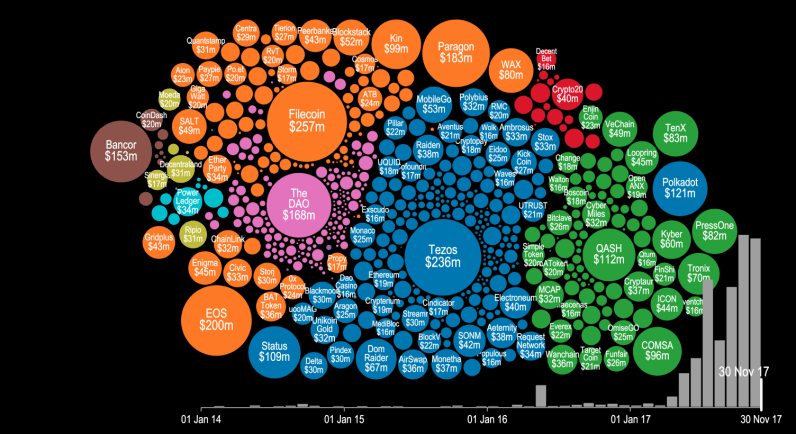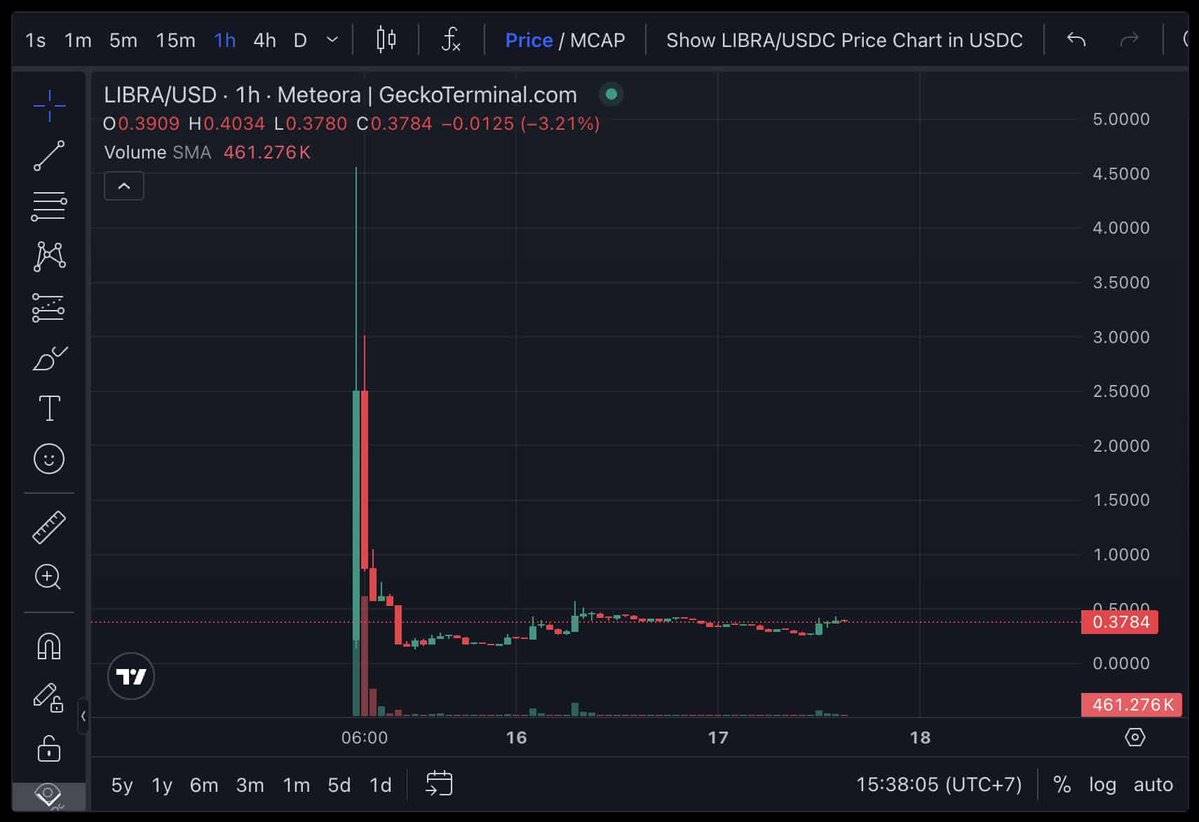Let's review the historic moments of wealth creation together.
Author: IcoBeast
Compiled by: Deep Tide TechFlow
Over the past nearly decade, a significant feature of cryptocurrency (not specifically Bitcoin) is that any ordinary person with internet access, some free time, and about six functioning brain cells can quickly turn a small amount of money into a large fortune.
Since 2016-2017, the crypto industry has experienced three to four widespread "gold rush" cycles. The common characteristic of these cycles is that some mainstream on-chain asset has a very low price but possesses enormous compounding potential, and the value of that asset then skyrockets.
Each time, the "dumbest person" you know in this industry manages to make jaw-dropping money, and then they tell their friends, who bring in more people. After all, "If that fool can turn $100 into $100,000, why can't I?"
Let's take a look back at these historic wealth creation moments…
Looking Back at History
2017 - The ICO Boom (After Ethereum ICO)
In my view, this was essentially the "golden age" of the crypto industry. A new project would emerge almost every day, complete with a white paper and a cool gradient logo, even though these projects had almost no real functionality. Yet, everyone rushed to throw their ETH into these ICOs to get allocations. Subsequently, these tokens would go live on exchanges, and people would flock to buy the new tokens, causing prices to soar. You could make a fortune and then convert your earnings back to ETH.

ICO Boom: The chart says it all
It was amazing. At that time, there were only about 100-200 tokens in existence, but none of them were truly usable or had any real significance. The operation was simply to throw ETH into various ICO projects and then earn back a lot of money—this was practically "free money." Everyone was trading those few fixed tokens, aiming to accumulate more ETH… the process was very straightforward. People would also share this "wealth code" with friends, who would join in as well. However, in the end, we all learned a lesson from the market as the crypto market began to crash, leading to a two-year bear market.
2020-2021: The "Yield Farming + Food Ponzi Scheme" Craze of DeFi
I personally didn't participate much in this wave (due to real-life matters), but its essence was the first launch of some "real" DeFi products (kicked off by the distribution of Compound's COMP token). This gave rise to various liquidity mining games and Ponzi schemes… once again, people rushed into a select few tokens, still aiming to maximize their ETH holdings.

Many early Crypto Twitter celebrities seized the opportunity to shine during this phase. At that time, the market attracted a lot of new capital because no one really knew how to play this game, and the tools for maximizing yields had not yet become widely available. Additionally, the price of ETH began to rise rapidly, further boosting everyone's profit and loss statements (PnL), while attracting more "speculator" funds into the market.
2021-2022: The Crazy Era of the NFT Bubble
In the past, the pandemic brought the world to a standstill, people received government subsidy checks while losing jobs (or businesses were forced to shut down), and they spent all day in Clubhouse and Twitter Spaces.
At this time, a group of people began minting NFTs. Among them, Bored Apes became the "kingmaker" of the industry (even though its minting time was long enough for anyone to participate). With the success of Bored Apes, the floodgates of the market were completely opened. You could mint the worst-looking image for 1 ETH and then wake up the next day to sell it for 20 ETH… and then its price would soar to 50 ETH. Everything was illogical; no one really wanted these JPEG files, and no one truly believed they were worth those outrageous prices. But everyone wanted to make money and continue playing this game.
This crazy wealth effect allowed people to flip a few images with a small amount of ETH, ultimately accumulating a large amount of ETH… almost without any skill, simply because "they were there." This clearly attracted massive attention, and NFTs quickly went mainstream. However, the bubble eventually burst, and most participants were ultimately eliminated by the market.
This wealth effect was briefly replicated during the Ordinals craze in early 2023. At that time, Bitcoin's price plummeted, and early Ordinals became a crazy "cooking" opportunity: you could quickly double a small amount of BTC into a large amount of BTC. Subsequently, Bitcoin's price experienced a parabolic surge. (And those who held onto JPEGs were ultimately "liquidated" by the market.)
January 25, 2023: The Wealth Craze of Meme Season
This could be said to be the longest-lasting wealth creation period in the "dumb money" cycle of cryptocurrency— the meme coin craze of ETH and Solana. Strictly speaking, it all traces back to the explosive rise of BONK after the FTX collapse at the end of 2022, but I prefer to view the true starting point as the rise of PEPE (based on ETH) in April 2023 and WIF (based on SOL) in November 2023, which opened the door to over a year of crazy token trading.
These air coins, which had no real use, no plans, and only a "vibe," saw their market caps soar to billions of dollars. Especially in the early days, you only needed to randomly buy a thousand dollars' worth of some random token, and you could almost guarantee waking up the next day to a 10x return… and this could continue for weeks.
As time went on, the game became increasingly difficult: bots became smarter, arbitrage tools more efficient, and developers' ability to cash out when "running away" grew stronger, raising the overall participation threshold. People began to take money out of the "casino" instead of continuing to pour money in after seeing friends make $20,000 in 17 minutes with tokens like "pepefartsockinu69420." Meanwhile, new trading pairs emerged every day, allowing you to continuously accumulate more ETH or SOL through these trades.

Then, the "9/11" event of meme coins occurred. TRUMP, MELANIA, and the final nail in the coffin—Hayden Davis's LIBRA. This changed the rules of the game. Everyone subtly understood that this game had become "cooked." When one party can steal over $100 million from the "collective fund pool" in a second, the game is no longer worth playing… after all, what could be crazier than a U.S. president secretly issuing a token and having its market cap soar to $70 billion FDV (Fully Diluted Valuation) overnight?
This is the situation we find ourselves in today. About nine months have passed since that "fatal blow." While there have been some standout opportunities during this time (especially since April, mainstream assets have performed well), there has been no event that could quickly multiply native tokens or mainstream assets and significantly appreciate in value.
To be honest, I don't know if this situation will ever reoccur. NFTs? They have already been "cracked"—now there are probably only 17 people left in the world who still want to trade or flip NFTs. Meme coins? They have also been "cracked"—becoming a 24/7 token deployer is clearly safer and simpler, allowing you to profit without any risk. On-chain Ponzi schemes? Everyone basically understands them now… only those "sharks" are still playing, and you must choose your exit timing very precisely, or you'll be devoured. Maybe ICOs will make a comeback? Monad is performing well. We'll see.
In the past year, we have hardly seen any "dumb money" driven simple wealth creation opportunities. That's why everyone is so angry. They have become accustomed to always catching a wave of such trends, while in the past nine months, we have only seen desolation (unless you hold a lot of mainstream assets, especially Bitcoin).
Recently, I mentioned on my timeline that the current on-chain offerings haven't particularly inspired me, and much of the content feels somewhat outdated. However, some teams building interesting "new" things reached out to me, and I plan to explore their prototypes in depth and document my testing and findings (of course, there will also be plenty of updates related to Kalshi crypto).
One of those teams is @zigchain, who hope to sponsor this article—this is actually something I intended to write weeks ago.
They are building a platform described as the on-chain version of "Wall Street," offering tokenized RWA (Real World Assets) yield products. These products aim to allow ordinary users to access higher-yield investment opportunities with a lower capital threshold, no longer limited to the traditionally high barriers to entry that are unfriendly to retail investors.
While I am optimistic about RWA in the long term (such as perpetual equity contracts, tokenized stocks, etc.), I generally hold a skeptical view of the RWA-related projects currently appearing in the market. However, the @zigchain team claims that their first application (Zignaly) already has over 400,000 real users, so I plan to try it out personally to see how their product performs.
As for whether RWA products can bring us the extreme wealth creation opportunities we have been missing, who knows? But I am ready to return to the "theoretical trenches" to try new things again and share my experiences. It has been too long since we had such exploratory content; we need more content that sparks interest and curiosity to appear on the timeline.
If you've read this far, thank you for your patience. I truly appreciate it—I still believe that one of the coolest things in the world is that there are a group of people online willing to take the time to read what I write. I hope this article brings you some value (whether for entertainment or otherwise), and I will soon share more content with everyone.
免责声明:本文章仅代表作者个人观点,不代表本平台的立场和观点。本文章仅供信息分享,不构成对任何人的任何投资建议。用户与作者之间的任何争议,与本平台无关。如网页中刊载的文章或图片涉及侵权,请提供相关的权利证明和身份证明发送邮件到support@aicoin.com,本平台相关工作人员将会进行核查。




